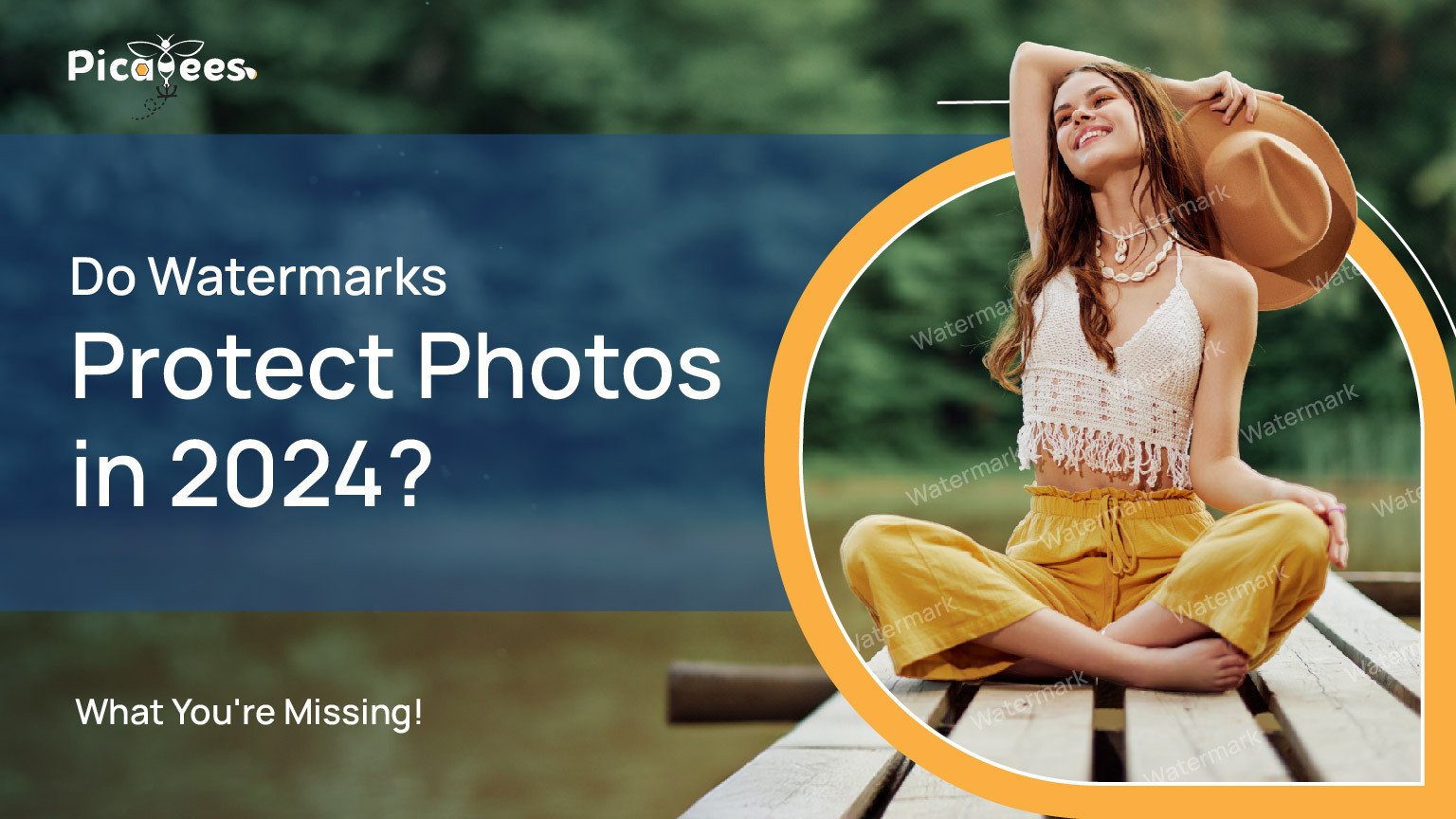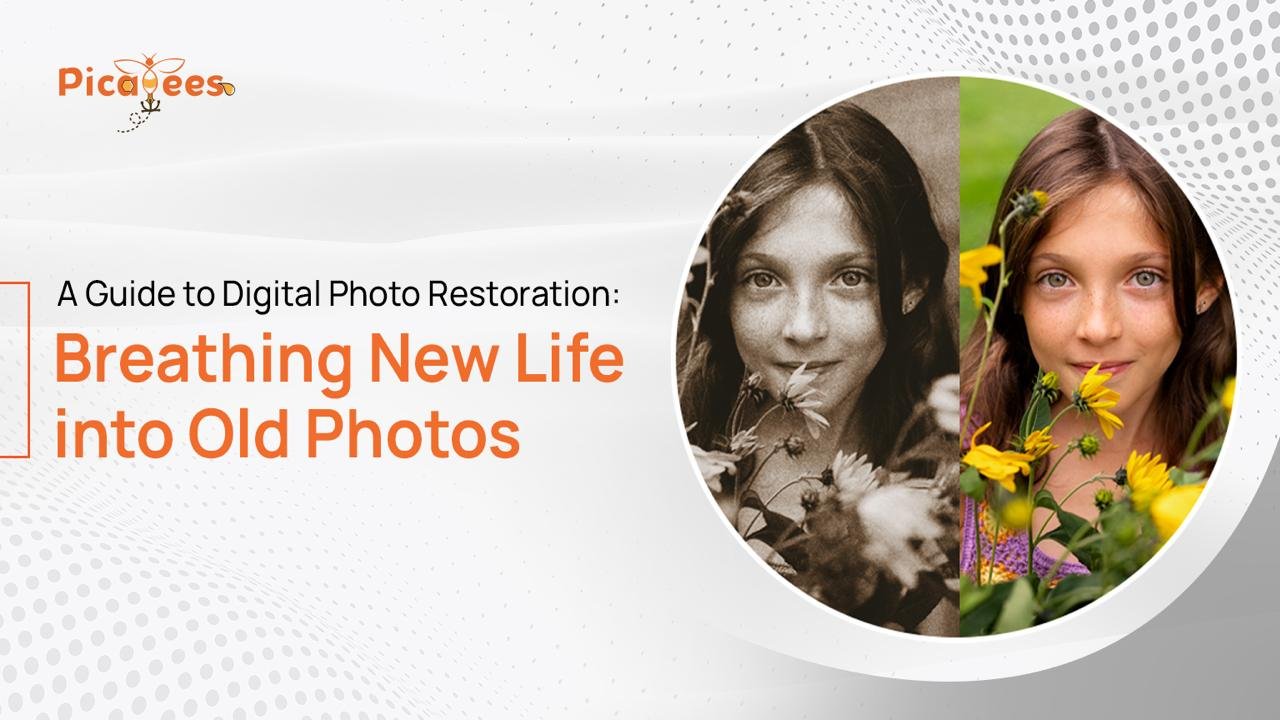In the world of digital photography, there’s a big debate: Do watermarks protect photos? It’s a question that keeps photographers and enthusiasts chatting.
But do those faint logos really stop others from swiping or messing with our favorite snapshots?
Let’s explore the ins and outs of watermarks and find out if they’re truly our photo superheroes.

Understanding Watermarks
A watermark is essentially a visible overlay, often a logo or text, superimposed onto an image to assert ownership or provide copyright information.
Initially employed by paper manufacturers to identify their products, watermarks found their way into the digital landscape as a means of protecting intellectual property.
The Disadvantages of Using Watermarks
While watermarks serve the purpose of asserting ownership, they come with their own set of drawbacks. Firstly, they can distract from the aesthetic appeal of the image, diminishing its aesthetics.
Moreover, skilled individuals can easily remove or obscure watermarks using various software tools, rendering them ineffective in deterring copyright infringement.
Why Do Photographers Watermark Their Photos?
Photographers resort to watermarking as a precautionary measure against unauthorized usage of their work. By imprinting their signature or logo onto the image, they aim to assert ownership and deter potential infringers.
Additionally, watermarks can serve as a branding tool, promoting the photographer’s name or studio across different platforms.
When Should a Photographer Not Use a Watermark?
While watermarking may seem like a foolproof method of protection, there are instances where it may not be necessary or advisable.
For example, in situations where the primary goal is to showcase the artistic merit of the photograph, such as in galleries or exhibitions, watermarks can detract from the viewer’s experience.
Similarly, when sharing images with trusted individuals or clients, overly conspicuous watermarks can come across as distrustful or unprofessional.
Do Watermarks Really Protect Photos From Theft?
One of the burning questions surrounding watermarks is their efficacy in preventing image theft. Unfortunately, the reality is far from ideal. Despite their presence, watermarks do little to deter determined individuals from misappropriating images.
With the proliferation of advanced editing software, removing or altering watermarks has become a trivial task for tech-savvy users, making them an unreliable form of protection.
Do Professional Photographers Use Watermarks?
While some professional photographers opt for watermarking as a precautionary measure, others choose to forego this practice altogether. The decision often boils down to personal preference and the specific context in which the images will be shared or distributed.
Established photographers may rely on their reputation and legal recourse to safeguard their work, rather than relying solely on watermarks.
The Pros and Cons of Watermarks on Photographs
Pros:
- Assert ownership and copyright information.
- Serve as a branding tool for photographers.
- Provide a visual deterrent against casual infringement.
Cons:
- Distract from the aesthetic appeal of the image.
- Easily removable by tech-savvy individuals.
- Can convey a sense of distrust or unprofessionalism in certain contexts.
- Alternate Solutions
Given the limitations of watermarks in safeguarding photos, photographers may explore alternative strategies for protecting their intellectual property.
These include:
Metadata Embedding: Embedding copyright information and ownership details directly into the image’s metadata.
Digital Rights Management (DRM): Implementing DRM technologies to control access and usage rights of digital content.
Legal Measures: Enforcing copyright laws and pursuing legal action against infringers when necessary.
Conclusion
In conclusion, while watermarks may offer a semblance of protection for your photographs, they are by no means foolproof.
Understanding their limitations and exploring alternative solutions is essential for safeguarding your intellectual property in the digital age.
Whether you choose to watermark your images or not, remember that vigilance and proactive measures are key in preserving the integrity of your work.
For professional and comprehensive image editing services that complement your photography endeavors, explore Picabees’ range of offerings today!
Learn more about our Image Editing Services.
In the ever-evolving landscape of digital photography, staying informed and adaptable is paramount. Let your creativity shine, and may your images continue to inspire and captivate audiences worldwide, watermark or not.





